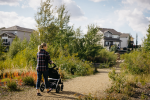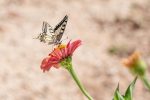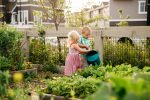How to Create a Simple Zen Space at Home
Truly, any space around your home or community can help facilitate the calm and relaxing we need to better handle our stress and live with a better emotional state.
See how urban beekeeping helps protect the environment and supports thriving neighbourhoods.
At Brookfield Residential, we’re always looking for new ways to build communities that support both people and the planet. One of our latest initiatives? Bringing bees into our neighbourhoods—and yes, it’s a good thing.
We’ve begun integrating apiaries (controlled beehive environments) in select communities across Alberta. These small features make a big difference for the environment, especially for pollinators like honeybees, which play a crucial role in our ecosystem.

An apiary is a place where beehives are kept, typically for honeybees. Unlike wasps, honeybees are gentle creatures that are more interested in collecting nectar and pollen than bothering people.
Adding apiaries in new communities helps create a safe, controlled environment for honeybees to thrive—boosting plant health and biodiversity in the area.
Pollinators like honeybees are responsible for pollinating nearly 70% of the crops we eat. But due to habitat loss, pesticide use, and disease, honeybee populations have been on the decline for years.
Einstein once said, “If the bee disappears from the surface of the Earth, man would have no more than four years to live.” While the science behind that quote is debated, the message is clear: bees matter.
By supporting honeybees in our developments, we’re helping:

It might surprise you, but urban environments can be great for honeybees. Why?
In many ways, bees thrive in the very communities we’re building—especially when we plan with them in mind.

At Brookfield Residential, sustainability is part of every community we design. We’ve already taken action to support pollinators in a few key ways:
🌼 Pollinator greenways like the one in Chappelle Gardens (Edmonton) provide protected corridors for bees and butterflies to travel safely and feed.
🐝 Apiary pilot projects are being explored in more neighbourhoods, with custom beehives designed to integrate into the community naturally and safely.
🌱 Native landscaping and wildflower plantings support pollinators throughout the growing season.
Some of our inspiration even comes from global leaders in design, like Snøhetta (the designers of Calgary’s Central Library), who turn apiaries into public art pieces that blend education, ecology and beauty.
Every detail counts when it comes to building sustainable communities—right down to the bees. By supporting pollinators, we’re not only creating more vibrant neighbourhoods, we’re also doing our part to reduce environmental impact and protect local ecosystems.
Want to learn more about how Brookfield is building for the future? Explore our communities and see what sustainable living looks like.